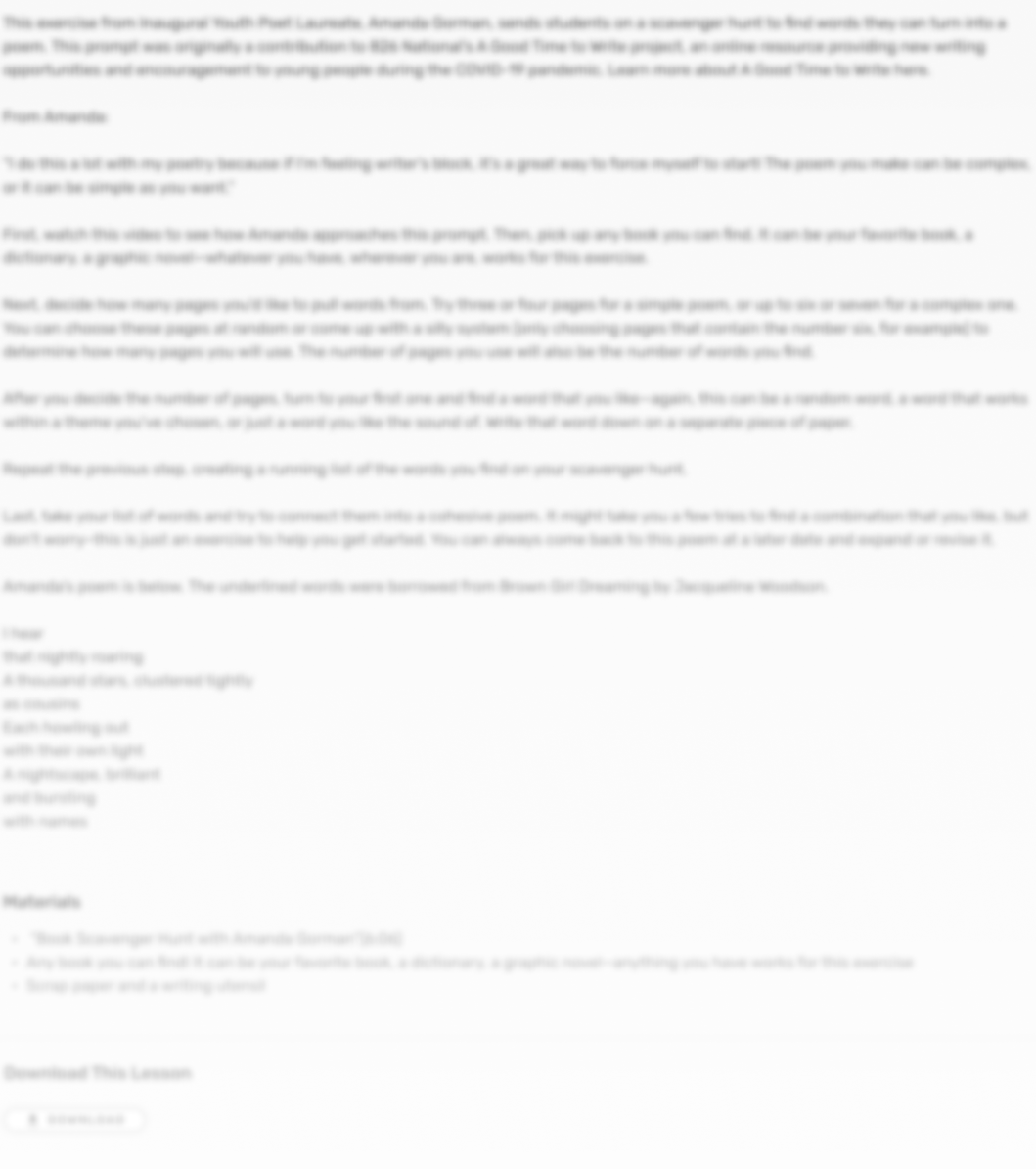 Grades 4–5
Grades 4–5 60+ Minutes
60+ Minutes Persuasive
Persuasive Videos
VideosNidhi Hebbar is currently a Program Manager for Information Literacy at Google. She is the co-founder of the EdTech Equity Project, which provides edtech companies with tangible, technical practices for more equitable product design and development, and provides guidance for schools to prioritize racial equity during the edtech evaluation and procurement process. She is passionate about equitable, student-centered education (re)design.
You will learn how to group key details together in a logical way.


STEP 1
First, watch the video and then answer these questions in your writing journal: “What is a community? What are some examples of a community?”
STEP 2
A community is a group of people who gather because of a shared reason–there are many reasons why people might gather, but for this lesson you will focus on the communities where you learn and live: school and your neighborhood. Follow the directions on page 1 of the Writing to Create Change— Handout to help you identify some issues within those 2 communities that you think need to be addressed.
STEP 3
Choose one of the issues you brainstormed in the...

by 826 National
Author and illustrator Lisa Brown reads "Owl Girl. In this lesson, you will write a superhero story that introduces your character and establishes the context for your reader.
by Amanda Gorman
Presidential Inaugural Poet, activist, and bestselling author Amanda Gorman shares one of her favorite techniques for starting a poem or getting over writers' block.
by 826 National
Novelist and short story writer, Caitlin Horrocks, reads "My Full Yard" by Marisol of 826michigan and reflects on the imagery used in the poem.
by Molly Sprayregen, 826CHI
Writer and 826michigan staffer Denise Ervin writes alongside students to show what feelings sound like.
by 826 National, featuring Milo Wu, Grade 2, NY
In this lesson, you will introduce an animal you know a lot about as the narrator of a story. The narrator will provide descriptive details ask the reader "Guess who?" at the end.
by Kinyel Friday, 826michigan
Children's book author, and 826michigan staff member, Kinyel Friday shares a social emotional learning prompt that uses personification to bring emotions to life.
by Mac Barnett
Mac Barnett, a New York Times-bestselling author of stories for children, illustrates how to end a story...or not.
by Javier Zamora, 826 Valenica alumni and New York Times bestselling author
Author Javier Zamora invites you to raise your voice and write to the next President of the United States.
by Daniel Handler
Author Daniel Handler, aka Lemony Snicket, shows there are no limits to imagination with this interviewing activity.
by Charlotte Yeung
Midwest Youth Poet Laureate Ambassador, Charlotte Yeung, shares one of her favorite brainstorming strategies for creating a new piece.
by 826 National, featuring Iman Abdullah, Grade 2, 826NYC
Have you ever thought about what you have in common with an animal? In this lesson, students will write a comparison poem that explores these similarities and differences.
by Cristeta Boarini, 826 MSP
Journalist and 826 MSP staffer, Cristeta Boarini, shares a poetry prompt that walks students through using shapes to convey meaning.
by 826 National
In this lesson, you will create a character and show how a character would respond in a specific situation by writing dialogue, resulting in a silly scene.
by 826 National
In this lesson, you will create a simple scrapbook that showcases the facts, definitions, and details you’ve learned about a few of the items you found in a scavenger hunt.
by 826 National, featuring Raiya Chhabra, Grade 5, VA
In this lesson, you will generate rhymes to use in a poem.
by Mychal Threets, librarian and literacy ambassador
Librarian and literacy ambassador Mychal Threets invites you to write about your feelings, your way with four writing prompts to explore your emotions on the page.
by 826 National, featuring Isaac Reynolds, Grade 6
What’s the moral of the story? In this lesson, students practice identifying and summarizing a moral in a fable written by a sixth grader.
by 826 National, featuring Naomi Ku, Grade 6, 826LA
What is the story of your favorite food? In this lesson, you will use descriptive details and sensory words to write a narrative that shares more about your favorite food.


We are thrilled to have you as the newest member of our online community. Stay up-to-date on the the latest and most relevant resources, student publication opportunities, and what’s new with the 826 Digital community.
